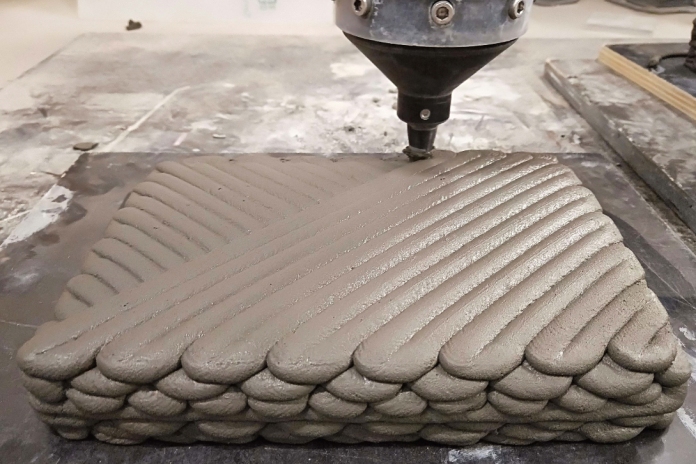Researchers are using patterns inspired by the internal structure of lobster shells to make 3D-printed concrete stronger.
A new experimental study by researchers at the Royal Melbourne Institute of Technology (RMIT) in Australia has been “bio-mimicking” lobster shells’ spiral pattern to increase the overall durability of 3D-printed concrete.
The RMIT team has also combined the twisting patterns with a specialised concrete mix enhanced with steel fibres. It claimed that the resulting material was stronger than traditionally made concrete.
Currently, the conventional pattern used in 3D printing is unidirectional, where layers are laid down on top of each other in parallel lines.

But the RMIT study found that including 1-2% steel fibres in the concrete mix reduces defects and porosity, increasing strength. The fibres also help the concrete harden early without deformation, enabling higher structures to be built.
Meanwhile, the team tested the impact of printing the concrete in helicoidal patterns (inspired by the internal structure of lobster shells), cross-ply and quasi-isotropic patterns (similar to those used for laminated composite structures and layer-by-layer deposited composites) and standard unidirectional patterns.
The results showed strength improvement from each of the patterns, compared with unidirectional printing, but the helicoidal patterns showed the most promise for supporting complex 3D printed concrete structures.
Lead researcher Dr Jonathan Tran said 3D printing and additive manufacturing opened up opportunities in construction for boosting both efficiency and creativity.
He said: “3D concrete printing technology has real potential to revolutionise the construction industry, and our aim is to bring that transformation closer.
“We know that natural materials like lobster exoskeletons have evolved into high-performance structures over millions of years, so by mimicking their key advantages we can follow where nature has already innovated.
“As lobster shells are naturally strong and naturally curved, we know this could help us deliver stronger concrete shapes like arches and flowing or twisted structures.
“This work is in early stages so we need further research to test how the concrete performs on a wider range of parameters, but our initial experimental results show we are on the right track.”
Further studies will be supported through a new large-scale mobile concrete 3D printer recently acquired by RMIT – making it the first research institution in the southern hemisphere to commission a machine of this kind. The 5×5m robotic printer will be used by the team to research the 3D printing of houses, buildings and large structural components.
The team will also use the machine to explore the potential for 3D printing with concrete made with recycled waste materials such as soft plastic aggregate.
The work is connected to a new project with industry partners Replas and SR Engineering, focusing on sound-dampening walls made from post-consumer recycled soft plastics and concrete, which was recently supported with an Australian Government Innovations Connections grant.









